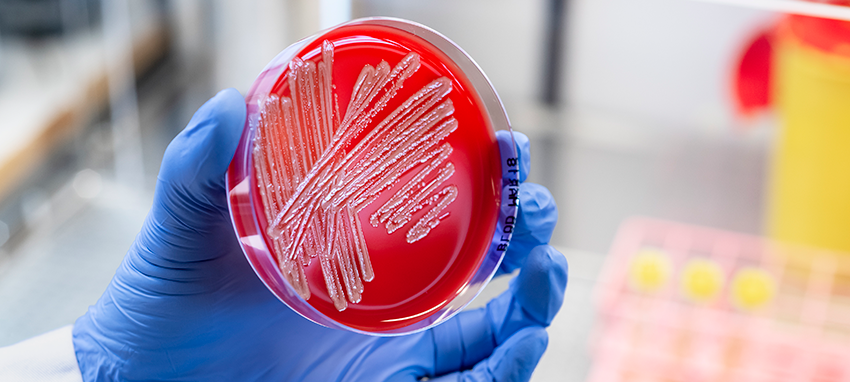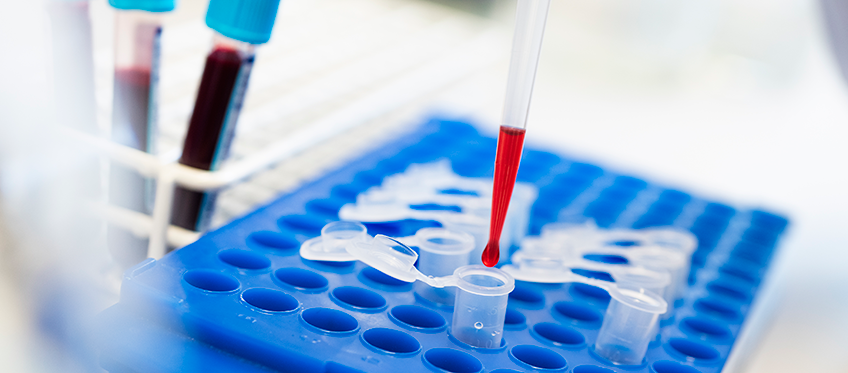Early identification and treatment with effective antibiotics is key for survival. Every hour that passes by without adequate and appropriate antibiotics increases the mortality rate substantially. Antimicrobial resistance is a rapidly growing concern that will further exacerbate challenges in sepsis treatment. There is an urgent need for novel and innovative antibacterial treatment options.
Surveys show that only 30-40 % of the general public are aware of sepsis as a medical condition. Sepsis has a rapid progression. Treatment is often a race against time. Sepsis often follows in the steps of other serious conditions, like cardiac arrest or cancer. Despite this, sepsis is less known, less understood and the research receives less funding.

Antibiotics have had a significant effect on lowering complications and risk of death after infections. When penicillin was discovered in 1928, it was believed to constitute the end of infections and therewith associated mortality. Today we know that bacteria can develop resistance to antibiotics by gene transfer between species and by selective pressure. The transformed bacteria cause the antibiotics to fail and can cause harmless infections to become life threatening. Limiting the spread of infections by proper sanitary precautions, limiting overuse of antibiotics, as well as responsible livestock husbandry helps to limit the spread of antibiotics resistance. Across the globe antimicrobial resistance causes avoidable deaths and hospitalization.
Antimicrobial resistance is a threat to modern medicine and the need for development of novel therapeutic strategies are urgently needed. In sepsis, it is vital that the patient receive appropriate and adequate antibiotics as quickly as possible. Studies show that mortality increases with every hour that administration of antibiotics is delayed. Hence, if the sepsis-causing pathogen is resistant to the firstly administered antibiotic drug, the wanted effect is absent, placing the patient at an increased risk of disease progression and death.
Sepsis starts from a localized infection at site in the body. The most common focus is the lungs causing pneumonia. The skin can be the onset after a wound. Infections can be caused by a multitude of pathogens, a wide array of bacteria, virus, parasites or fungi. The age of the patient as well as co-morbidities or other predisposing factors will affect the symptoms of sepsis as well as the outcome.
The medical professions encountering sepsis patients in the acute phase include physicians in infection medicine, intensivists, pediatricians, geriatricians, oncologists and emergency physicians. The diversity of medical specialities encountering sepsis patients, along with the other differences in presentation of the disease state and the rapid progression, contributes to making sepsis an elusive target for medical therapy.

Sepsis can originate from infections caused by a wide array of pathogens: including bacteria, virus, parasites or fungi. Bacterial causes include such as to Staphylococcus aureus, streptococcal species, Streptococcus pneumoniae, Escherichia coli, Enterococcal species, Klebsiella pneumonia, Pseudomonas aeruginosa and Neisseria meningitidis. The bacteria use an arsenal of molecular weapons to establish infection through adherence to e.g. an epithelial surface, multiplication, defense mechanisms (like evasion) towards proteins (like antimicrobial peptides) and cellular activities (like phagocytosis or creation of NETs) of the innate immune system.
The ability of a bacteria to cause disease is referred to as virulence factors. Virulence as such can also depend on host factors. Bacterial toxins are well-known immune response-provoking agents. In the case of superantigens, the bacteria cause a non-specific activation of T-cells resulting in polyclonal T cell activation and massive cytokine release. This has the potential to cause profound downstream effects. Despite the fact that only approximately 30% of all sepsis patients have bacteria that can be isolated and cultured from blood many bacterial virulence factors with known impact on the immune system are secreted and have systemic effects.